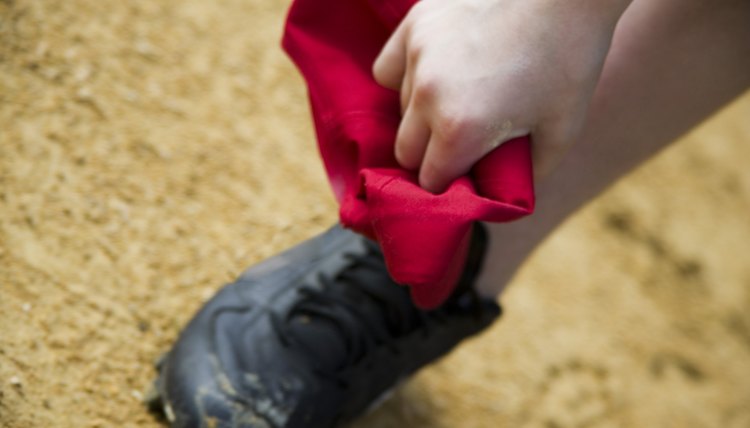Rules for High School Baseball Cleats

Baseball is a sport of explosive movements and the piece of equipment most responsible for those movements are the baseball cleats. Depending upon the surface, specific types of cleats are recommended for maximum effectiveness, traction and speed. High school cleat rules allow for a variety of options while ensuring the safety of its players through specific mandates and regulations.
Molded/Plastic Cleats
Molded, plastic cleats are acceptable in high school baseball, as long as the spikes are molded appropriately, without any sharp ends. Molded cleats are generally used by newer players or players who play on artificial surfaces where metal spikes could ruin the integrity of the surface.
Metal Cleats
Traditional metal cleats are permitted for players in the 13U age division and higher. Metal cleats are critical on dry, hard surfaces for the best traction possible and are the preferred type for more experience players.
Turf Cleats
Rubber soled turf cleats are also permitted at the high school level. Turf cleats have small, rubbers spikes and are another good option for artificial surfaces. They also provide a softer surface for the foot.
Cleat Alterations
Cleat rules specifically prohibit any alteration of cleats that would make them dangerous. Sharpening of spikes, adding metal tips and other alterations put the safety of players at risk during slides, collisions and other physical aspects of the sport. Any cleats deemed unsafe by the umpire cannot be worn.
References
Writer Bio
Based in Annapolis, Md., Kate Hickman has been involved with sports management since graduating from Vanderbilt University in 2006. Author of a holistic recruiting manual for high school athletes, a monthly e-publication through her business, Balance Lacrosse, and a monthly contributor to Lacrosse Magazine, Hickman has a thorough understanding of all things sports.
